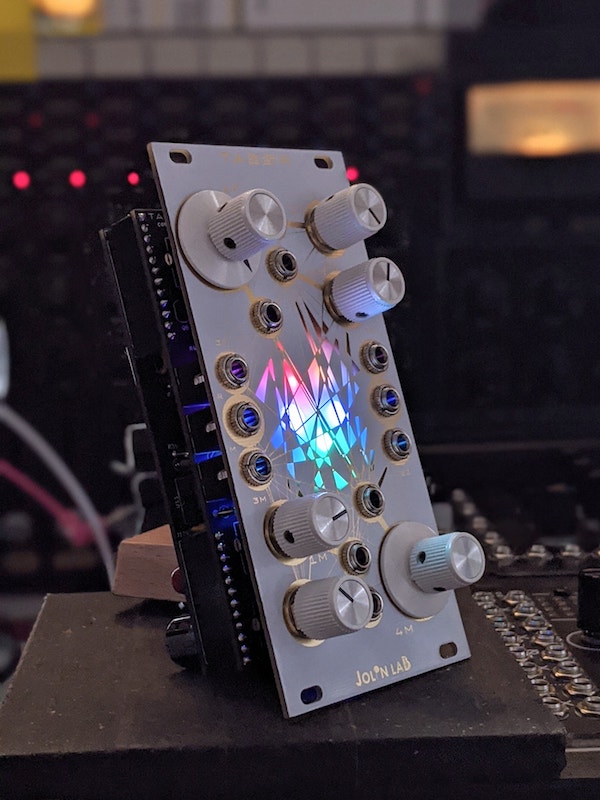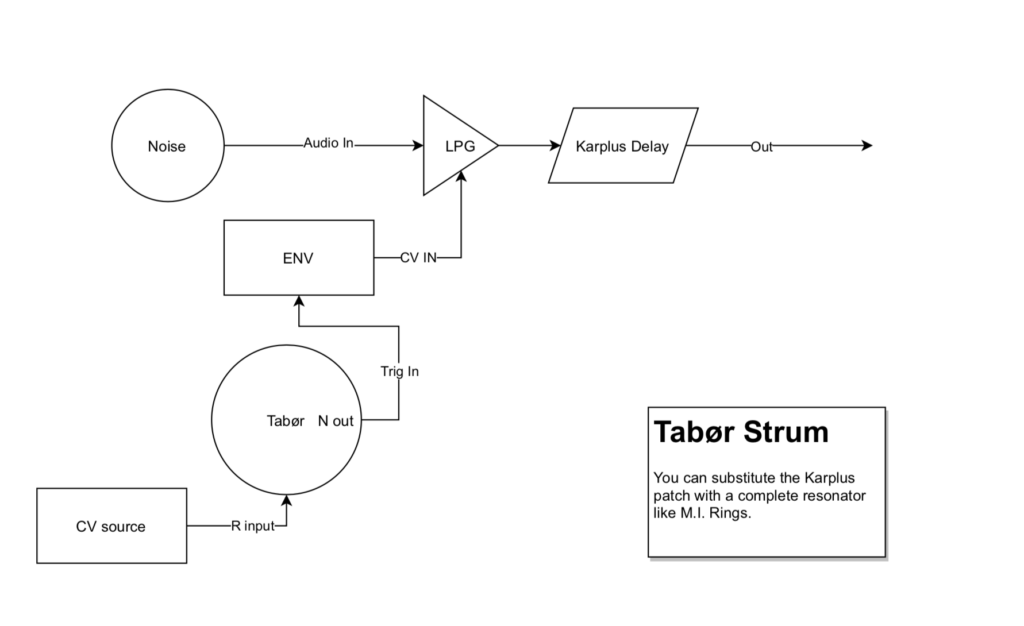Using Eurorack modular system we all want to achieve organicity in sound and behaviour.
Since when I’ve acquired Tabør by Jolin Lab I’ve changed my perception in organicity in Eurorack modules.
I feel like with its squelching noisy voice it’s alive, breathing and screaming.
And my first video of this module emphasizes this Tabør side.
But recently I’ve explored its rhythmic side, indeed Tabør is one of the most organic clocks I’ve ever heard in Eurorack-Land.
The most obvious choice would be the TR out, which provide a trigger, but had better results with N and ZZ output, since with these outputs we will use all 4 oscillators core.
So easy isn’t it?
Connect Tabør output to a clock divider and we’re ready to go?
Wrong ! (kinda..)

We need another step, Jolin Lab guys were so kind as to provide us with an R input, yep the circled one.
The R input can do multiple things, it can clock your tabor acting as a clock in, it can constrain the overall pitch, it can even make Tabør act as steady ramp vco ( kinda) and much more interesting for our goal: it can slow down Tabør…a lot!
So providing a fixed Voltage to R input can help us to put Tabør in pseudo “clock mode”.
For this purpose, I’ve used a Pressure Point by Makenoise, but any fixed DC offset Source can work ( even Knobby from Jolin Lab *wink*).
The best way to find how much voltage do we need is to start at 100% on the voltage source and decrease gradually till Tabør stops oscillating, and then apply just a little bit of Voltage and put it in clock mode.
All knobs 0% except 4m at 100%, with values ranging 1.5v and 1.8v, is the best default state.
Now connecting Tabor out to a mixer attenuated channel you will clearly hear a pulse clock.
Start twiddling knobs and you will hear polyrhythms galore. Every parameter is related and will change the rhythmic behaviour.
You can even modulate parameters to achieve different rhythms over time, isn’t that the all modular purpose?
Patch #1 – Tabor as a Gate

We need 4 modules:
- A fixed cv Source
- Tabør
- Lowpass Gate
- A VCO
First set Tabør as explained before in “Clock mode”, then connect tabor to LPG’s Cv input.
In this case, we will use Tabør as gate cv for the LPG, that with its natural decay will give us a soft Enveloped and filtered sound.
Next, connect a VCO to LPG’s audio input and LPG output to your monitor out.
Easy as that you can now start to fiddle with tabor knobs to obtain various gated rhythms or modulate those parameters with a sequencer.
Patch #2 – Tabør as a Clock Source

We need 4 modules:
- A fixed cv Source
- Tabør
- A Clock Divider
- A sampler
First put Tabør in clock mode, connect the N output to a clock divider.
I’ve chosen the Horologic Solum plus Uter for this purpose but it can work with whatever Clock divider you own.
Use a sampler with multiple gate input to trigger samples with this “quirk clock”.
In case you are missing a sampler in your system, you can trigger multiple LPG with different VCO like in the previous patch.
Patch #3 – Tabør strums resonators.

This is my favorite patch of three, we need:
- A fixed cv Source
- Tabør
- A resonator
- A Lowpass gate or a Vca
- An Envelope
Start with Tabør in “Clock Mode”.
From there you have two paths, use a Resonator module like Rings or create a Karplus patch as I’ve done.
1st Path:
Connect Tabør N or ZZ out to Strum Input on Rings, multiply Tabør clock out to a random quantized Cv source clock in (like Ornament and crime).
Connect quantized out to 1V/Oct of Rings.
Twiddling with the knob on Fixed Cv source gives you back a strummed chord since Tabør will “Click” faster.
2nd Path:
Start with Tabør on Clock mode and then connect N or ZZ out to the envelope trigger input.
Connect an audio source to the Lowpass gate audio input, then the Envelope CV out to LPG Cv input.
I’ve used a classic white noise provided by Disting mode 3-1 controlled by an envelope from Ornament and crime, everything connected to a MakeNoise Lpg.
Connect the enveloped source to a BBD module, like a Doepfer A-188-1 and set it in “Karplus mode”, optional you can quantize the V/oct input of the Karplus patch.
Lastly, connect the Delay out to your monitor path.
Twiddling knobs on Tabør will give you back various rhythms and strums, you can also change rate with the Fixed Cv source Knob.
Tip on Fixed Cv source (aka Dc offset generators)
There’s plenty of modules which act as fixed cv source.
In this article I’ve used a Pressure Point by Makenoise but here you can find some suggested modules you can use instead.
- Doepfer A-138 – Without anything connected the Input 1 knob act as a Cv source (0-5V)
- Makenoise ModDemix – Without anything connected the two knobs act as Dc Offset ( aka Cv Source).
- 2hp Dc- this act as the Pressure Point but without the touch plate.
- Mutable Instrument Shades – Use unipolar mode and without nothing connected will give you DC offset.
mz2250
Leave a Reply